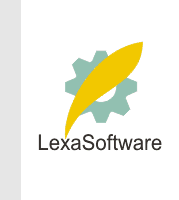Filmscanners mailing list archive (filmscanners@halftone.co.uk)
[Date Prev][Date Next][Thread Prev][Thread Next][Date Index][Thread Index]
[filmscanners] RE: Advice on scanner settings
> However, very high quality JPEG can reduce it to about 8 megs or less,
with little loss,
I have to disagree with my friend Art on this one. I do not think that a
high quality .jpg will reduce the file size significantly more than using
the lossless LWZ compression with a TIFF file and is less open to artifacts
and other issues that can arise from lossy compression used by JPEG if and
when there are numerous iterations of opening and closing of the file with
changes to it being made with the various iterations. However, to get to
the amounts of compression Art has suggested, you would have to save the
file as a JPEG with significiant amounts of compression at lower quality
levels with lossy compression. This increases the possibilities of JPEG
artifacts and data loss significantly and is not really desirable for
archiving purposes.
-----Original Message-----
From: filmscanners_owner@halftone.co.uk
[mailto:filmscanners_owner@halftone.co.uk] On Behalf Of Arthur Entlich
Sent: Thursday, February 26, 2009 2:18 AM
To: laurie@advancenet.net
Subject: [filmscanners] Re: Advice on scanner settings
All your setting sound reasonable assuming you are wishing to maintain
the files as a permanent collection of your images in a digital format,
to be accessed later as needed. That way you won't need to return to
the slide except for very specialized purposes.
I'm assuming your collection is going to be quite large, and that it
extends through many years and many emulsion types. Multiple passes
adds a lot of time to the scanning, so you may want to consider if that
is necessary for all the slides or if some exposures, ISOs, or emulsion
types don;t require as many passes. Multi-pass does improve the dynamic
range and lowers noise artifacts, particularly with dense slide with
deep shadows, but it may not be necessary for slides with fairly even
exposure and which are brighter. I would suggest doing a few tests and
determine which category of slides need extra passes, as many may not
(check both the type of scene/exposure and film stock (Ektachrome,
Kodachrome, etc.) including film ISO, and when the manufacturers made
large changes in film emulsion. Then you may be able to categorize them
and determine some can get away with one or two passes, and others would
benefit from 3 or 4.
Storage involves several issues. If you are scanning beyond 8 bits per
color at 4000 dpi, the end result can be up to 100 megs per image. Even
at 8 bit, you are talking about 35-45megs in TIFF format. However, very
high quality JPEG can reduce it to about 8 megs or less, with little
loss, but conversion will add a bit of processing time. If you have
enough storage you may want to stay with TIFF. Be sure to back up
regularly since the scanning is the big time consumer and you wouldn't
want to lose your images.
As has been mentioned, infrared scans of some Kodachrome films will not
effectively remove dust and scratches, because there is residue silver
left in the film even after processing which is opaque to IR, so the
software cannot tell the difference between the silver and dust.
Good luck. It's a large project you are tasking on, so anywhere you can
find efficiencies is worthwhile to take advantage of.
Art
Carlisle Landel wrote:
> Bunch,
>
> I about to begin scanning a lifetime of slides (mostly Ektachrome but
> a smattering of Kodachrome) using a Nikon LS-5000 and Vuescan.
>
> Are the following settings appropriate? Why or why not?
>
> I'm planning on 4000 dpi for maximum resolution, with 3 samples and
> the color analog gain set at 1 for all colors.
>
> I'm also planning a light infrared screen with no other filtering
> with respect to colors, grain reduction, or sharpness.
>
> I'm planning to auto balance colors using the default options and
> appropriate slide types.
>
> With respect to output, I gather that TIFF is better than JPEG,
> because JPEG is compressed. Is that right?
>
> Thanks for your input,
>
> Carlisle
>
> --who figures he'll start scanning now, then figure out how to
> manipulate scanned images later.
>
>
>
>
>
>
----------------------------------------------------------------------------
------------
Unsubscribe by mail to listserver@halftone.co.uk, with 'unsubscribe
filmscanners'
or 'unsubscribe filmscanners_digest' (as appropriate) in the message title
or body
----------------------------------------------------------------------------------------
Unsubscribe by mail to listserver@halftone.co.uk, with 'unsubscribe
filmscanners'
or 'unsubscribe filmscanners_digest' (as appropriate) in the message title or
body
|

